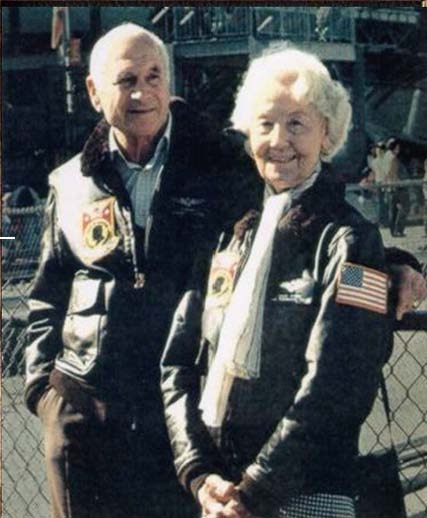
The Fishers, together with others like the Rudins, Dursts, Roses, Tishmans and Resnicks, are considered one of the royal families that over two or three generations molded the Manhattan real estate market.
Mr. Fisher hurt his knee in a construction site accident when he was a teenager, and the injury led to his rejection by the Marine Corps when he tried to enlist in 1942. But he never lost interest in the armed forces. Over the years Mr. Fisher lavished attention and money on military and veterans’ projects. He gave more than $25 million to the establishment of the Intrepid Museum. He also set up a foundation that sent $10,000 checks to families of the 241 people who died when a Marine barracks was bombed in Beirut in 1983.
President Bill Clinton, saying that he didn’t know of any other civilian who cared as much about the military, awarded Mr. Fisher the Presidential Medal of Freedom in 1998.
In the 1970’s Mr. Fisher championed the U.S.S. Intrepid, the aircraft carrier that has become a floating museum. The Intrepid he saw was a rotting, rusting aircraft carrier headed for the scrap heap. But it was a ship that had sailed with distinction in World War II and the fighting in Korea and Vietnam. The carrier sustained many blows, including a kamikaze strike in 1944.
Mr. Fisher founded the Intrepid Museum Foundation in 1978 to save the battle-scarred carrier, and he was the main force behind the move to revive it as a tourist attraction and a learning center for children. After it found its new mission in 1982 on Pier 86 at 46th Street, he also helped maneuver the moored museum through financial difficulties in the late 1980’s.
The Intrepid, now the world’s largest naval museum, receives more than half a million visitors a year from around the world. Thousands of children come for physics and history lessons, vocational training and counseling or to attend the summer and after-school programs of the Intrepid’s cadet corps.
Much of the philanthropy endowed by Mr. Fisher and his wife, Elizabeth, directly benefited members of the military, veterans and their dependents. The interest was rooted in their life experiences.
Elizabeth Fisher served overseas with the United Service Organizations in World War II, entertaining troops as a Ziegfeld girl and visiting the bedsides of wounded soldiers, sailors and airmen. Mr. Fisher assisted the Army Corps of Engineers in building coastal defense installations.
The Fisher Armed Services Foundation not only aided the families of those killed in the barracks bombing in Beirut, but also the families of scores of other servicemen who lost their lives. Among the recipients of the foundation’s help were the families of the sailors killed in a gun turret explosion on the U.S.S. Iowa in 1989.
In addition, the Fisher Armed Forces Scholarship Foundation was established to help active and former military personnel and their families obtain educations. The Fishers also gave money to the United States Naval Academy, and they began the Fisher House Program in 1990 to build ”homes away from home” for families of hospitalized military personnel.
The Secretary of Defense, William S. Cohen, said that ”the death of Zachary Fisher, an American patriot, is a great loss to this country and the Department of Defense.”
In 1990, Mr. Fisher’s wife, Elizabeth, was stricken with Alzheimer’s disease. Four years later the Fisher Medical Foundation joined David Rockefeller in providing $5 million for the Zachary and Elizabeth M. Fisher Center for Research on Alzheimer’s Disease at The Rockefeller University. The center houses the largest laboratory in the nation involved in Alzheimer’s research. Mr. Fisher’s medical foundation was set up for the purpose of helping to find a cure for the disease.
Among his many other charities were the Jewish Institute of National Security Affairs, the United Jewish Appeal, the George C. Marshall Foundation, the Margaret Thatcher Foundation and the Reagan Presidential Library. He also served on the boards of Carnegie Hall and the Metropolitan Opera.
Zachary Fisher was born in Brooklyn on Sept. 26, 1910, and went to work in construction at 16. The family business was started earlier in the century by his father, Carl Fisher, who became a force in real estate as a general contractor building apartment houses in New York.
He and his older brothers Martin and Larry formed Fisher Brothers as the privately held core of a conglomeration of construction, holding and management businesses. Mr. Fisher was for many years in charge of the company’s leasing operations.
Fisher Brothers, which controls more than five million square feet of office towers, now is largely operated by five of his nephews and great-nephews. Most recently it was considering a bid to become the building contractor for a huge, Hollywood-type movie studio proposed for the Brooklyn Navy Yard.
Source
From The New York Times “Zachary Fisher, 88, Dies; Helped Alter New York Skyline.” By WOLFGANG SAXON. Published: June 5, 1999.









